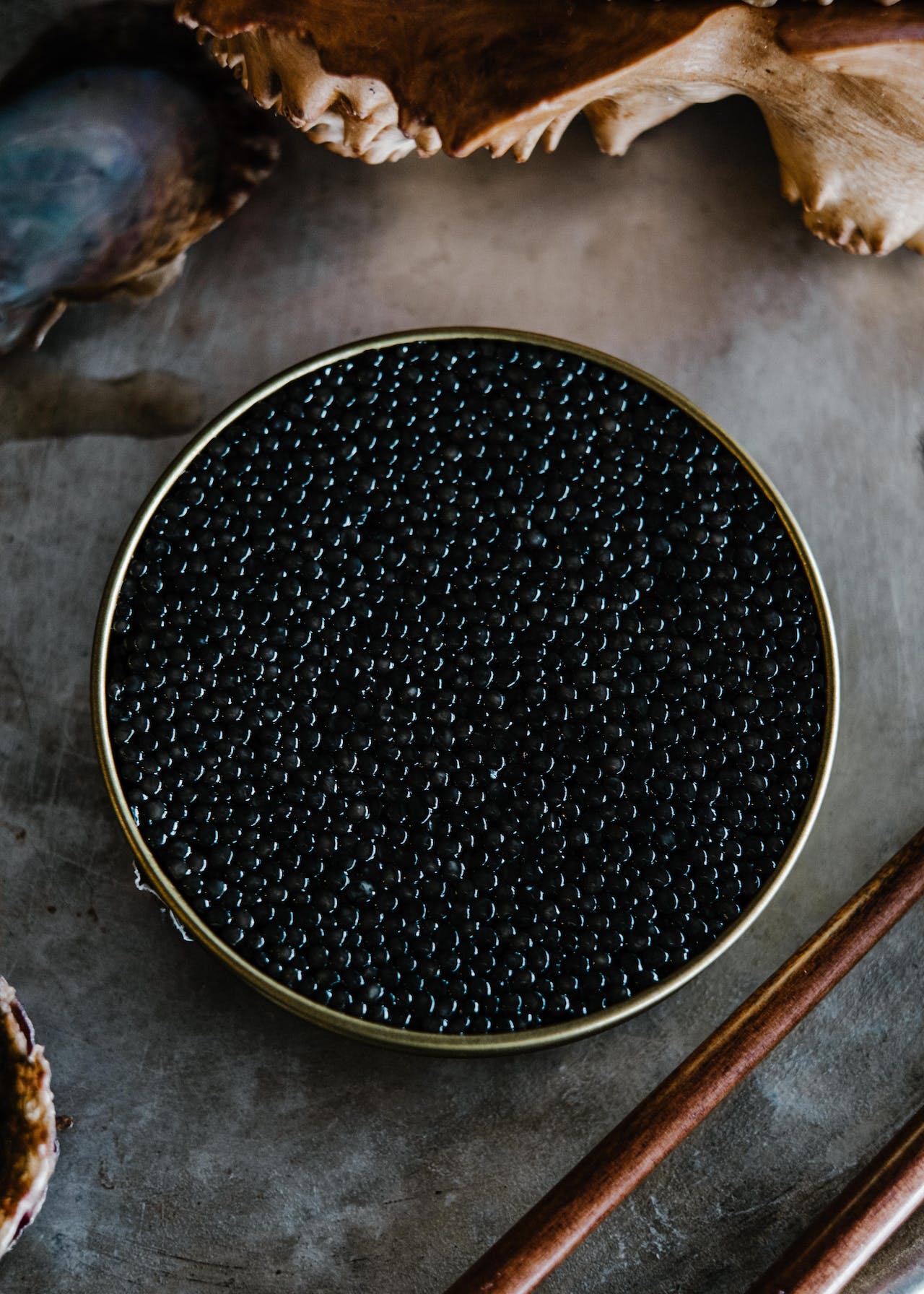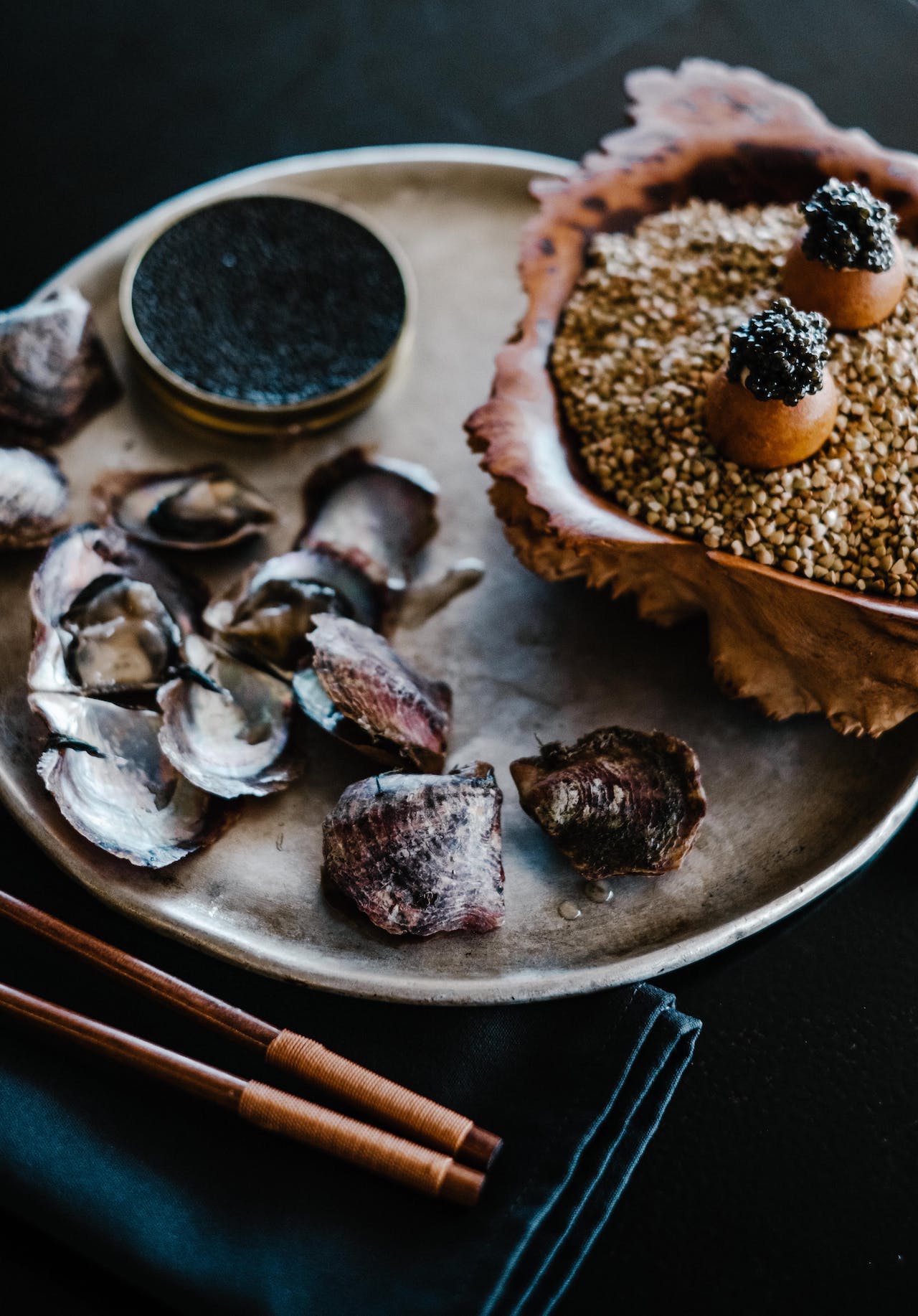Caviar, the luxurious delicacy of sturgeon roe, has long been a symbol of culinary opulence and sophistication. Harvested from the Caspian Sea and its surrounding regions, caviar’s rich, nuanced flavors have captivated the palates of gourmands around the world. In this blog post, we’ll delve into the art of complementing caviar, elevating it from a mere indulgence to a holistic gastronomic experience. Be sure to learn the basics about caviar here.
Nutritionally rich, tasty, and tantalizing, this luxury called caviar is one of the royal foods from days past. Caviar roe eggs are fine in texture, and one of the most prized exported products of Iran. The fish roe is captured from the Caspian Sea, specifically the region of Sefidrud, where the caviar is harvested.
Many people like to consume caviar by spoonful alone, without combining it with any other thing to feel its pure taste, whereas, some people like to add it with a side dish and enjoy the flavor combination. There are many varieties of Caviar including Beluga Caviar, Almas Caviar, Sevruga Caviar, Osetra Caviar, and some others are best at their own taste, but let’s see what else is there to eat along with it!
Iran’s Impact on Caviar
Iran and its relationship with caviar is a tale steeped in history, culture, and gastronomy. As one of the traditional heartlands of caviar production, Iran’s role in the caviar industry is both significant and fascinating.
Historical Context
- Caspian Sea: Iran borders the southern coast of the Caspian Sea, the world’s largest saltwater lake. This sea has been historically abundant in sturgeon, the fish from which caviar is harvested.
- Ancient Tradition: Iran has a centuries-old tradition of caviar production. Historically, the Persians were among the first to consume caviar. They called it “Chav-Jar,” which means “cake of power” or “cake of strength,” as they believed caviar had medicinal properties.
Types of Iranian Caviar
- Beluga Caviar: Known for its large, soft eggs, Beluga caviar is considered the most luxurious. It’s harvested from the Beluga sturgeon in the Caspian Sea.
- Ossetra and Sevruga Caviars: These are other notable types of caviar produced in Iran. Ossetra caviar, known for its nutty flavor, comes from the Ossetra sturgeon, while Sevruga caviar, with smaller grains, comes from the Sevruga sturgeon.
Production and Quality
- Traditional Methods: Iran is known for using traditional methods in caviar production, focusing on quality over quantity. The process of extracting, processing, and salting the roe is often done manually.
- Quality Control: The Iranian caviar industry is known for its stringent quality control measures, ensuring that the caviar’s taste, texture, and freshness meet high standards.
Culinary and Cultural Significance
- Gastronomic Delight: In Iranian cuisine, caviar is considered a delicacy and is often reserved for special occasions and celebrations.
- Global Recognition: Iranian caviar is highly prized in international markets for its quality and is often considered a benchmark for premium caviar.
Modern Industry
- International Trade: Despite facing sanctions and trade restrictions in various periods, Iranian caviar has maintained a presence in the global market, synonymous with luxury and quality.
- Farming and Innovation: In recent years, Iran has been exploring aquaculture and innovative methods to sustainably farm sturgeon and produce caviar, adapting to the changing environmental and economic landscape.
Perfect Pairings for Caviar
Before exploring pairings, it’s important to understand what caviar is and what makes it so special. True caviar comes from the roe of sturgeon species, primarily Beluga, Ossetra, and Sevruga sturgeons. Each type offers a unique flavor profile, from the creamy, mild notes of Beluga to the nutty undertones of Ossetra and the briny sharpness of Sevruga.
1. Traditional Accompaniments
- Blinis and Toast Points: Small, yeasty pancakes or lightly toasted bread provide a neutral base that accentuates the caviar’s flavor.
- Crème Fraîche: This slightly tangy cream adds a rich, smooth texture, balancing the saltiness of the caviar.
- Chopped Hard-Boiled Eggs: Finely chopped eggs, both whites and yolks, offer a contrasting texture and a mellowing effect.
- Chives or Minced Onion: A sprinkle of these adds a subtle sharpness that complements the caviar’s richness.
2. Beverage Pairings
- Champagne: The classic choice. The effervescence and acidity of a good Brut Champagne cleanse the palate between each luxurious bite.
- Vodka: A traditional Russian pairing, chilled, high-quality vodka complements caviar without overpowering its flavors.
- Dry White Wines: Crisp, mineral-driven wines like Chablis or Sancerre offer a refreshing counterpoint to the roe’s creaminess.
3. Culinary Creations
- On Scrambled Eggs: Adding caviar to softly scrambled eggs creates a rich and decadent dish, perfect for a lavish brunch.
- With Seafood: Top canapés of smoked salmon or lobster with a dollop of caviar for an extravagant appetizer.
- Caviar Topped Sushi: Elevate sushi rolls or sashimi by crowning them with a spoonful of caviar.
4. Innovative Ideas
- Caviar Tacos: Small tacos with a base of crème fraîche, topped with caviar, offer a playful yet sophisticated twist.
- Caviar on Oysters: A small spoonful of caviar on a freshly shucked oyster combines the sea’s two most luxurious offerings.
5. Consider the Serving Tools
- Mother of Pearl Spoons: Always use non-metallic spoons, like those made from mother of pearl or bone, as metal can impart a metallic taste to the caviar.
A Note on Sustainability
With the increasing concern over sturgeon populations, it’s vital to source caviar responsibly. Look for sustainably farmed options or varieties from companies practicing ethical wild harvesting.
Conclusion
It behooves us to always following proper etiquette and the manners. Its generally advised to not more than 2 spoons full. If you are going to taste caviar for the first time, you should eat it as it is, without adding anything else to allow you the full real flavor in your mouth. Moreover, as we know, caviar is way too expensive to eat fast and frivolously and not savor and enjoy!
Caviar, with its complex and luxurious flavor profile, offers a world of pairing possibilities. Whether served with traditional accompaniments, paired with fine beverages, or incorporated into creative culinary dishes, caviar remains an extraordinary food that speaks of elegance and refinement. Remember, the key to enjoying caviar is not just in its taste but in the experience it brings – a celebration of the senses, a moment of indulgence, and a tribute to the culinary arts.
Bon Appétit


